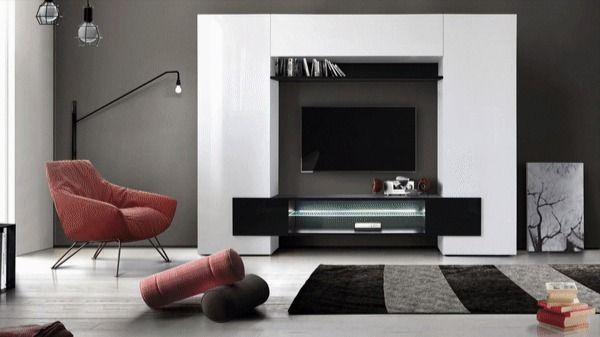Furniture in Fashion: A Blend of Aesthetics and Functionality

Furniture plays an indispensable role in our lives. Beyond mere functionality, it serves as an extension of our personal style and an expression of our taste and preferences. Furniture in fashion encompasses a wide array of designs, materials, and trends that continue to evolve, reflecting the ever-changing demands of modern living. In this article, we will delve into the world of furniture in fashion, exploring its significance, popular trends, and the synergy between aesthetics and functionality.
Furniture has always been more than just utilitarian. It is a fundamental aspect of interior design, capable of transforming a space from ordinary to extraordinary. When you walk into a room, the furniture you encounter not only provides comfort and utility but also sets the mood and atmosphere. Whether it’s a minimalist, sleek chair in a contemporary loft or a plush, vintage sofa in a classic living room, furniture plays a crucial role in defining the aesthetics of a space.

- Aesthetic Appeal
The aesthetics of furniture in fashion have witnessed a remarkable evolution over the years. Today, you can find furniture that embodies a wide range of styles, from mid-century modern and industrial to Scandinavian and bohemian. Each style brings its unique charm and character to a room, allowing individuals to curate spaces that resonate with their personality.
- Functionality and Comfort
While aesthetics are important, functionality and comfort remain paramount. Modern furniture design prioritizes ergonomic considerations, ensuring that pieces are not only visually appealing but also practical and comfortable. Sofas with built-in storage, adjustable tables, and multi-purpose furniture are just a few examples of how functionality has been seamlessly integrated into fashionable furniture designs.
- Sustainability
In recent years, sustainability has become a significant focus in the furniture industry. With growing concerns about environmental impact, furniture designers and manufacturers are increasingly using sustainable materials and production methods. Furniture in fashion now includes pieces crafted from reclaimed wood, recycled materials, and eco-friendly finishes, appealing to environmentally-conscious consumers.
To stay relevant in the world of furniture in fashion, it’s essential to keep an eye on current trends. Here are some trends that have gained popularity in recent years:

- Minimalism: Minimalist furniture design remains a timeless trend, characterized by clean lines, simple forms, and a focus on functionality. Minimalist pieces often have a neutral color palette, making them versatile and adaptable to various interior styles.
- Natural Materials: The use of natural materials such as wood, rattan, and stone has surged in popularity. These materials add warmth, texture, and a touch of nature to indoor spaces, creating a harmonious blend between the interior and the environment.
- Vintage Revival: Vintage and retro furniture styles from the mid-20th century continue to make a comeback. Iconic pieces from this era, such as Eames chairs and teak sideboards, are highly sought after by those looking to infuse a sense of nostalgia into their interiors.
- Modular and Flexible Furniture: In today’s dynamic living spaces, modular and flexible furniture has become a necessity. These pieces can adapt to changing needs, making them ideal for small apartments and multifunctional rooms.
- Artisanal Craftsmanship: Handcrafted furniture with a focus on intricate detailing and craftsmanship has gained recognition. These pieces not only showcase the skill of artisans but also bring a sense of uniqueness and individuality to interiors.
Furniture in fashion is more than just a utilitarian element of our living spaces; it’s a form of self-expression. It reflects our personal style, values, and aspirations, while also addressing our practical needs. As the world of furniture design continues to evolve, the synergy between aesthetics and functionality remains at its core. Whether you prefer a minimalist, eco-friendly design or a luxurious vintage piece, furniture in fashion offers an abundance of choices to cater to your unique tastes and requirements. So, as you embark on your next interior design project, remember that furniture isn’t just an afterthought – it’s the cornerstone of your space’s identity.















